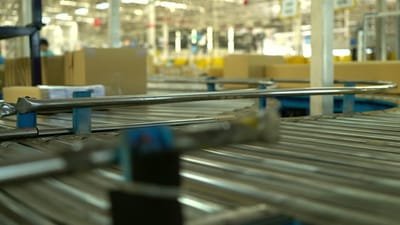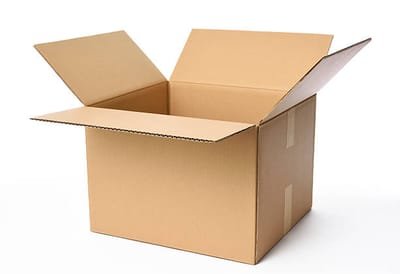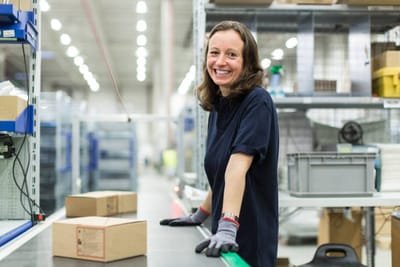Advantages of a Vertical Rotary Cartoner
A vertical rotary cartoner is an essential piece of packaging equipment that can speed up the packaging process and save you money in the long run. Often, these machines have a small footprint and fill up to 80 cartons per minute. They are usually equipped with a special carton feeder and can hold up to two inches tall and two inches wide boxes. A good vertical rotary cartoner will have spare stations and can accommodate a variety of types of cartons. Click to read more.
The VRC-60 is a fully automated cartoning machine that offers industry-first advancements for repeatability, reliability, and versatility. The 12-position indexer provides the speed and reliability that the user needs. This unit can produce 60 cartons per minute, and its turn-table design makes it easy to load, code, and inspect each product. The space-saving footprint allows for easy installation. The VRC-60 also features an optional conveyor belt.
The VRC-60 is an efficient vertical rotary cartoner with a 60-minute production capacity. It is designed to save floor space and is compact enough to fit in small areas. The compact footprint is another advantage of this machine. The VRC-60 offers superior repeatability, reliability, and versatility for a wide range of packaging applications. A full automation vertical rotary cartoner allows it to produce as many as 60 packages per minute. Using the multi-position indexer, the VRC-60 can run at a fast rate of sixty packages per minute. Its turntable design allows for loading, coding, and inspection. More tips to view here.
A vertical rotary cartoner can be customized to meet your specific requirements. A quality vertical rotary cartoner can run up to 60 packages per minute. It is ideal for smaller production runs and offers full control and enhanced safety. Its semi-automatic operation ensures consistency, quality, and consistency in the end product. A high-speed, semi-automatic machine can improve your competitive edge. It is fully automated, but can be switched between automatic and manual modes.
A vertical rotary cartoner can run up to 60 packages per minute. It is versatile enough to handle a wide variety of sizes and loading options. In addition to its speed, the VRC-60 also supports different styles of cartons. For instance, a bottom-lock model has a bottom panel that inserts into the other side of the carton. Its design is also ideal for packaging everyday necessities. A fully automated machine can easily generate up to 600 packages per minute.
The VLC-70 is a table-top vertical rotary cartoner with an innovative multi-position indexer. Its stainless steel frame and cladding ensures durability and long-term performance. The VRC-60 is also compact, requiring very little floor space and is very easy to operate. You can install it in minutes and begin packing with a small investment. With a high-speed vertical rotary cartoner, you'll save time and money!
For more information, check out http://en.wikipedia.org/wiki/Cartoning_machine.
The VRC-60 is a fully automated cartoning machine that offers industry-first advancements for repeatability, reliability, and versatility. The 12-position indexer provides the speed and reliability that the user needs. This unit can produce 60 cartons per minute, and its turn-table design makes it easy to load, code, and inspect each product. The space-saving footprint allows for easy installation. The VRC-60 also features an optional conveyor belt.
The VRC-60 is an efficient vertical rotary cartoner with a 60-minute production capacity. It is designed to save floor space and is compact enough to fit in small areas. The compact footprint is another advantage of this machine. The VRC-60 offers superior repeatability, reliability, and versatility for a wide range of packaging applications. A full automation vertical rotary cartoner allows it to produce as many as 60 packages per minute. Using the multi-position indexer, the VRC-60 can run at a fast rate of sixty packages per minute. Its turntable design allows for loading, coding, and inspection. More tips to view here.
A vertical rotary cartoner can be customized to meet your specific requirements. A quality vertical rotary cartoner can run up to 60 packages per minute. It is ideal for smaller production runs and offers full control and enhanced safety. Its semi-automatic operation ensures consistency, quality, and consistency in the end product. A high-speed, semi-automatic machine can improve your competitive edge. It is fully automated, but can be switched between automatic and manual modes.
A vertical rotary cartoner can run up to 60 packages per minute. It is versatile enough to handle a wide variety of sizes and loading options. In addition to its speed, the VRC-60 also supports different styles of cartons. For instance, a bottom-lock model has a bottom panel that inserts into the other side of the carton. Its design is also ideal for packaging everyday necessities. A fully automated machine can easily generate up to 600 packages per minute.
The VLC-70 is a table-top vertical rotary cartoner with an innovative multi-position indexer. Its stainless steel frame and cladding ensures durability and long-term performance. The VRC-60 is also compact, requiring very little floor space and is very easy to operate. You can install it in minutes and begin packing with a small investment. With a high-speed vertical rotary cartoner, you'll save time and money!
For more information, check out http://en.wikipedia.org/wiki/Cartoning_machine.

Types of Packaging Equipment
Currently, most packaging equipment is automated. This greatly increases efficiency and production times. CAD/CAM and CNC machines control the process, resulting in reduced labor costs. The goal of the future is to produce more sustainable products. Several types of automated packaging equipment are available. Here is a look at some of the most popular types. The following are some of the most popular types of packaging equipment. All of these pieces of equipment are important for any business. Click to read more here.
Impulse sealers use heat to create a seal. This type of machine is typically small and manually operated. An impulse sealer features a heating element that warms materials to form a seal. Packaging machinery refers to the equipment that is used to package a product. In contrast, packaging systems comprise two or more machines that are integrated together. The rotary sealer uses continual motion to create a tight seal. If you're looking for a more automated packaging system, consider investing in a rotary sealer.
Fully-automatic packaging is capable of functioning without manual intervention, and operators typically involve themselves in replenishing the components. An example of a fully automated packaging system is an assembly line. An assembly line enables packaging manufacturers to automate their production lines. An aniline printing machine, which uses rubber blocks that are dipped in an aniline dye, prints on a wide variety of substrates. This method is commonly used today for beverages, acids, and chemical packaging. Visit homepage to get started.
Semi-automatic packaging equipment is capable of functioning without operator input. This type of packaging machinery requires no programming and is fully automated. The only intervention needed from the operator is to resupply the packaging components. Some systems are customized for specific needs. They can perform essential tasks in one operation while ensuring that they are energy-efficient. A wide range of packaging types is available for customized applications. You can even choose between an automatic and a semi-automated machine for your business.
There are several different types of packaging equipment. The fully-automated kind requires no operator involvement. It is capable of performing its functions without a human operator's help. The semi-automatic model is also a fully-automated one. An automated machine will not require an operator. It will not require any human input, which is beneficial for you. The machine will automatically deliver the desired number of bags per minute. Depending on the type of product, you can choose between a manual and an automatic option.
A filling machine is a machine for filling a previously manufactured package. It can be used to fill one large part or up to 100 smaller parts. Another type is a bagging machine. A flexible bag is made from a plastic material. These bags are sealed by heat and have one opening. Flexible packaging systems are ideal for liquids and are often used for beverages, chemicals, and acids. However, manual packaging is the best option for smaller companies.
Find out more about this at http://www.youtube.com/watch?v=D1FFKbxS0ao.
Impulse sealers use heat to create a seal. This type of machine is typically small and manually operated. An impulse sealer features a heating element that warms materials to form a seal. Packaging machinery refers to the equipment that is used to package a product. In contrast, packaging systems comprise two or more machines that are integrated together. The rotary sealer uses continual motion to create a tight seal. If you're looking for a more automated packaging system, consider investing in a rotary sealer.
Fully-automatic packaging is capable of functioning without manual intervention, and operators typically involve themselves in replenishing the components. An example of a fully automated packaging system is an assembly line. An assembly line enables packaging manufacturers to automate their production lines. An aniline printing machine, which uses rubber blocks that are dipped in an aniline dye, prints on a wide variety of substrates. This method is commonly used today for beverages, acids, and chemical packaging. Visit homepage to get started.
Semi-automatic packaging equipment is capable of functioning without operator input. This type of packaging machinery requires no programming and is fully automated. The only intervention needed from the operator is to resupply the packaging components. Some systems are customized for specific needs. They can perform essential tasks in one operation while ensuring that they are energy-efficient. A wide range of packaging types is available for customized applications. You can even choose between an automatic and a semi-automated machine for your business.
There are several different types of packaging equipment. The fully-automated kind requires no operator involvement. It is capable of performing its functions without a human operator's help. The semi-automatic model is also a fully-automated one. An automated machine will not require an operator. It will not require any human input, which is beneficial for you. The machine will automatically deliver the desired number of bags per minute. Depending on the type of product, you can choose between a manual and an automatic option.
A filling machine is a machine for filling a previously manufactured package. It can be used to fill one large part or up to 100 smaller parts. Another type is a bagging machine. A flexible bag is made from a plastic material. These bags are sealed by heat and have one opening. Flexible packaging systems are ideal for liquids and are often used for beverages, chemicals, and acids. However, manual packaging is the best option for smaller companies.
Find out more about this at http://www.youtube.com/watch?v=D1FFKbxS0ao.

Types of Packaging Equipment
There are many types of packaging equipment. These machines are used for a variety of applications. Some assemble the load while others break it down. A wide range of products is produced with the aid of these machines, so there's a machine out there to suit your needs. Listed below are just a few of the many options available to you. Read on to discover the different types of packaging equipment, and how they can improve your business. Visit this link to get more information.
A laminating machine is an excellent option for your packaging needs. These machines are capable of applying a protective film to your materials. This provides a professional look and provides additional protection for the product. They usually feature a heating element and are designed for large-scale work as well as personal use. Labeling equipment adheres labels to packages, such as shipping instructions, product identification, or pricing information. Some of these machines are even small enough to be used by a single person or small business.
Choosing a suitable packaging equipment is a vital part of your business. Regardless of your industry, a variety of different types are available. The following article will discuss some of the most popular types. Once you have determined which type of packaging equipment you require, you can start your search. A quick search online will help you narrow down your choices and make a final decision. Getting the right tool for the job is an essential part of any business, and using the right tools is critical for a successful product. Find more tips at this helpful article.
Choosing the right packaging equipment is an essential part of any business. There are many different types of packaging equipment to choose from. Some types are more expensive than others. The cost of new machinery is dependent on how much functionality you need. Some systems are so complicated that they must be custom-built. Typically, the costs of new packaging equipment fall into two categories: the initial set-up expenses (electrical wiring, ventilation, etc.) and ongoing maintenance costs.
Another important category of packaging equipment is laminating equipment. These machines apply thin laminating films to packages, giving them a professional look. These machines are generally small and can be purchased individually or for bulk work. For small business purposes, you should consider purchasing a labeling machine. This piece of equipment can be used for shipping various items, including food. It also contains labels that are used for identification. It is essential to have labels that are easy to read and easy to understand.
There are several factors that indicate that your packaging equipment is outdated. You may have a problem with the quality of the packaging. You need to make sure that you purchase a good quality used machine. A good used packager should be able to offer a warranty that is as long as possible. It should also be able to service the machine. Once you've purchased the machine, you can customize the settings to suit your needs. This can prevent damage to the product.
Learn more about packaging at http://en.wikipedia.org/wiki/Packaging_machinery.
A laminating machine is an excellent option for your packaging needs. These machines are capable of applying a protective film to your materials. This provides a professional look and provides additional protection for the product. They usually feature a heating element and are designed for large-scale work as well as personal use. Labeling equipment adheres labels to packages, such as shipping instructions, product identification, or pricing information. Some of these machines are even small enough to be used by a single person or small business.
Choosing a suitable packaging equipment is a vital part of your business. Regardless of your industry, a variety of different types are available. The following article will discuss some of the most popular types. Once you have determined which type of packaging equipment you require, you can start your search. A quick search online will help you narrow down your choices and make a final decision. Getting the right tool for the job is an essential part of any business, and using the right tools is critical for a successful product. Find more tips at this helpful article.
Choosing the right packaging equipment is an essential part of any business. There are many different types of packaging equipment to choose from. Some types are more expensive than others. The cost of new machinery is dependent on how much functionality you need. Some systems are so complicated that they must be custom-built. Typically, the costs of new packaging equipment fall into two categories: the initial set-up expenses (electrical wiring, ventilation, etc.) and ongoing maintenance costs.
Another important category of packaging equipment is laminating equipment. These machines apply thin laminating films to packages, giving them a professional look. These machines are generally small and can be purchased individually or for bulk work. For small business purposes, you should consider purchasing a labeling machine. This piece of equipment can be used for shipping various items, including food. It also contains labels that are used for identification. It is essential to have labels that are easy to read and easy to understand.
There are several factors that indicate that your packaging equipment is outdated. You may have a problem with the quality of the packaging. You need to make sure that you purchase a good quality used machine. A good used packager should be able to offer a warranty that is as long as possible. It should also be able to service the machine. Once you've purchased the machine, you can customize the settings to suit your needs. This can prevent damage to the product.
Learn more about packaging at http://en.wikipedia.org/wiki/Packaging_machinery.

